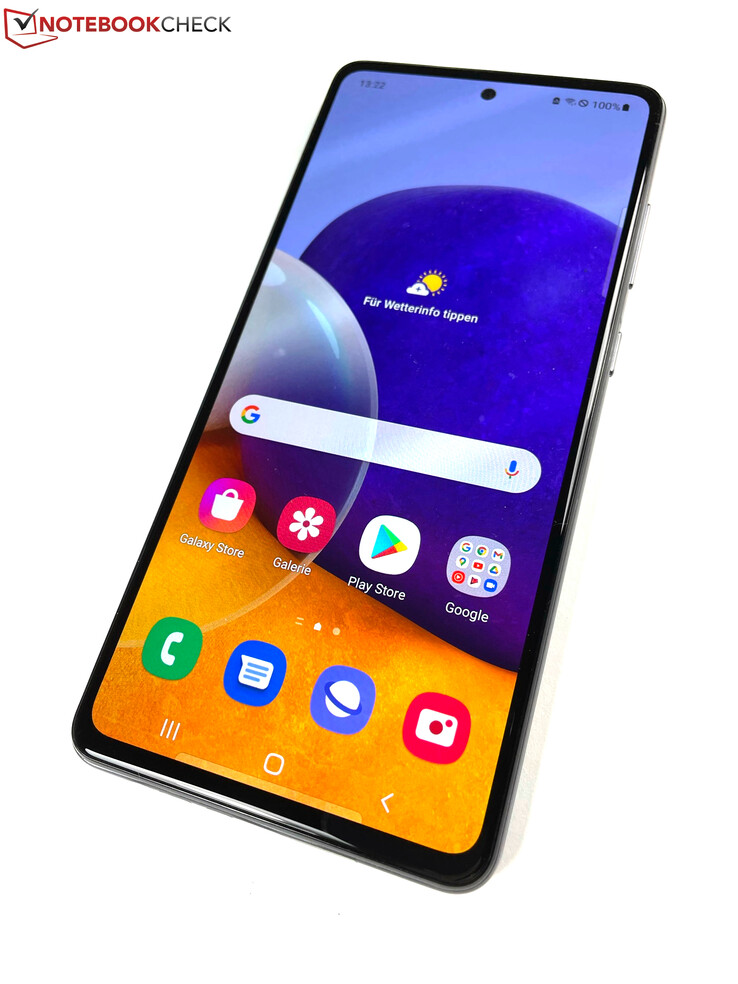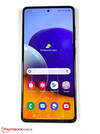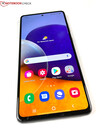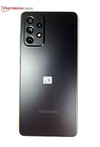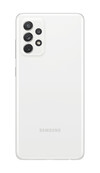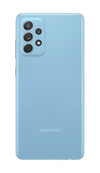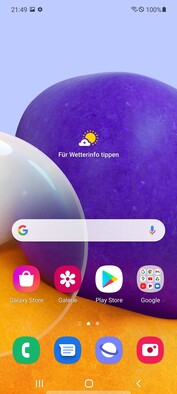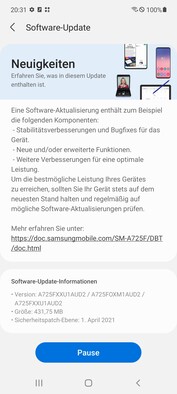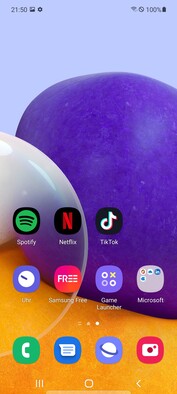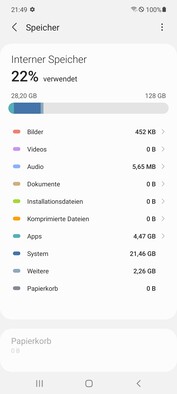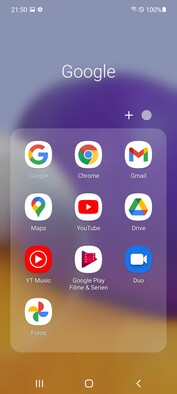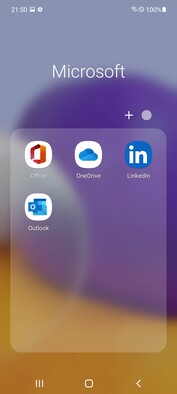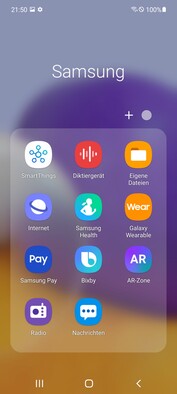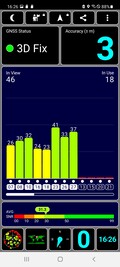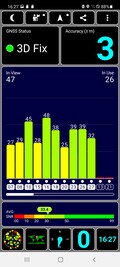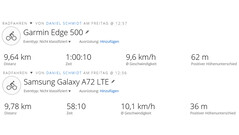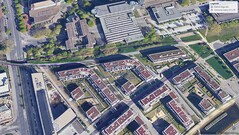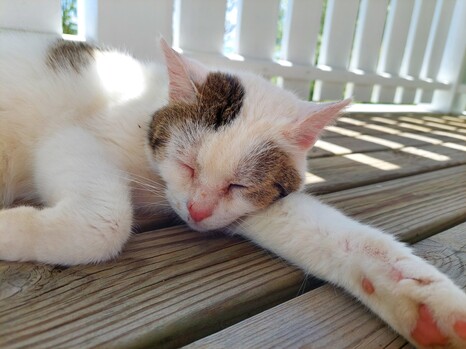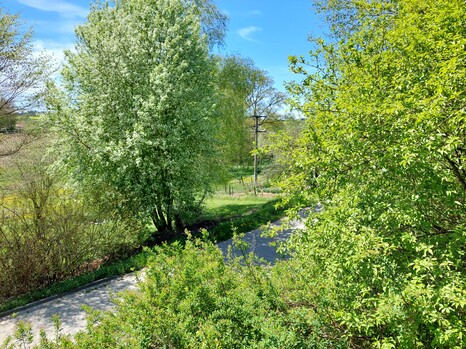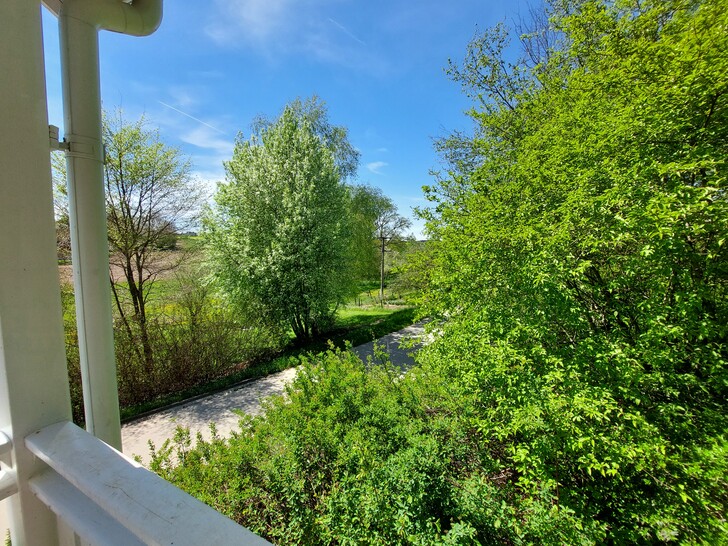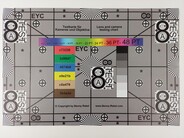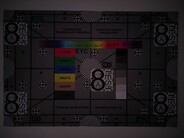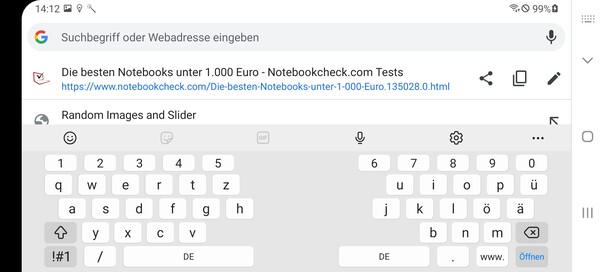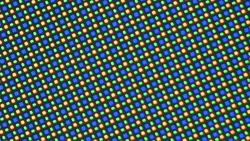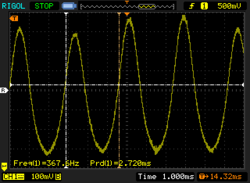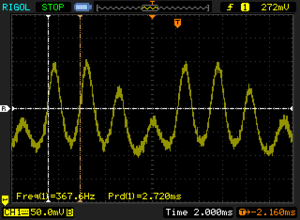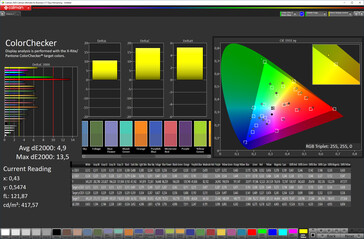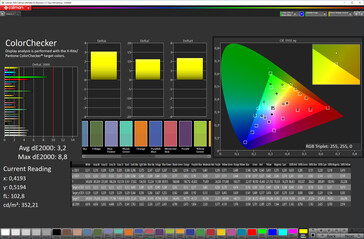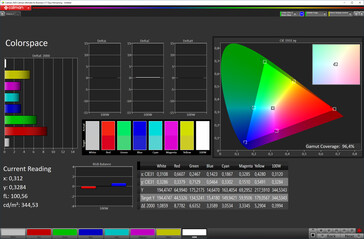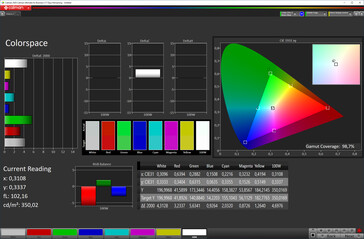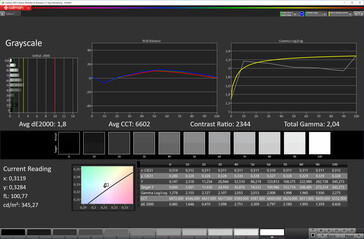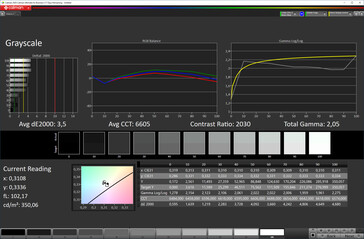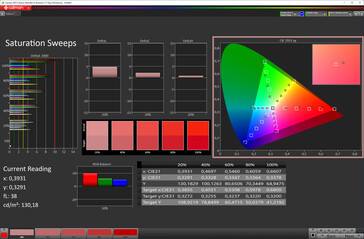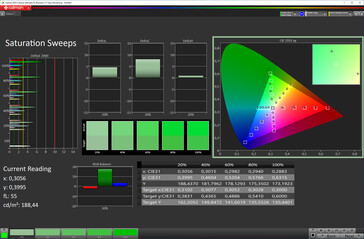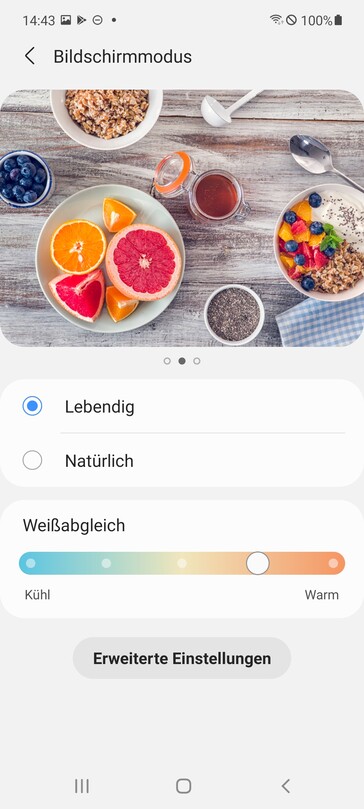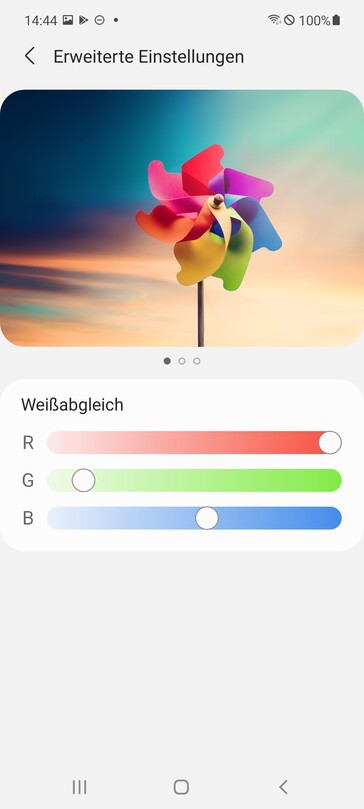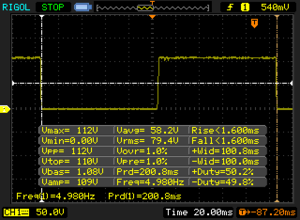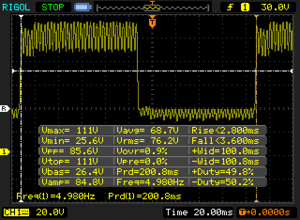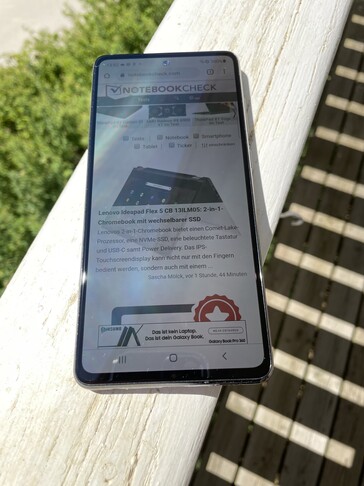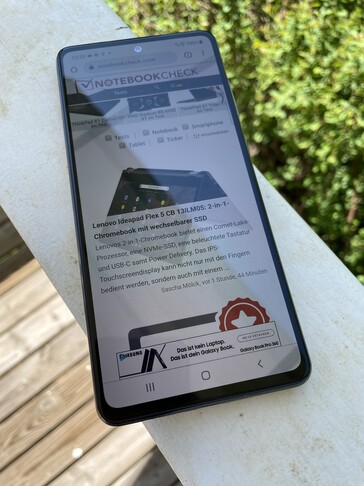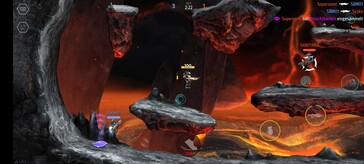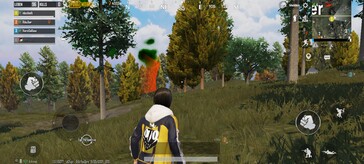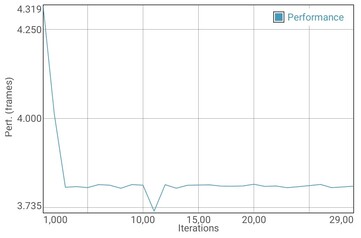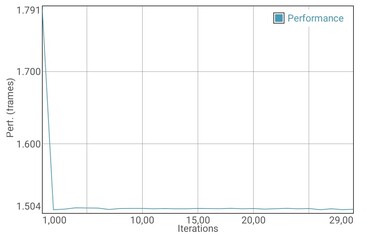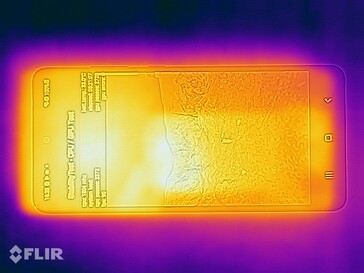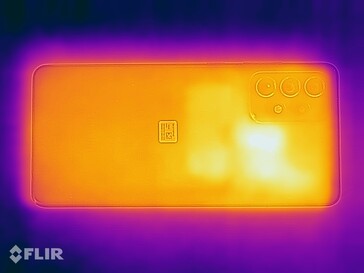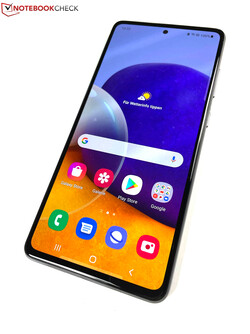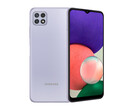Samsung Galaxy A72 smartphone review - Fine tuning for the mid-range champion
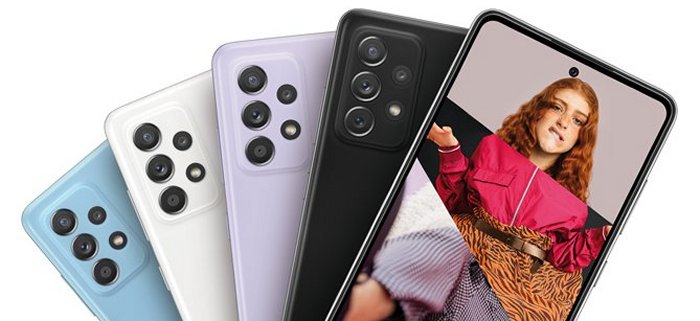
Samsung has relaunched the flagship models of its popular Galaxy-A series. There are 3 variants: the Galaxy A52 the Galaxy A52 5G and the Galaxy A72. The trio uses a uniform design, is IP67 dust and water resistant, and also offers more than the respective predecessors in terms of display, battery, and camera.
With the Galaxy A72 we take a closer look at the top model of the Galaxy-A refresh. Like the Galaxy A71 the successor is also 6.7 inches and has an OLED panel with 2400 x 1080 pixels. However, the refresh rate has increased from 60 to 90 Hz. The brightness also increased - up to 800 cd/m² is supposed to be possible.
Further innovations: The Galaxy A72 is equipped with a different SoC (Snapdragon 720G), the battery capacity increased from 4,500 to 5,000 mAh and the camera now includes 4 instead of 3 lenses unlike the predecessor. They offer photo equipment from macro to telephoto lenses that fits virtually every shooting situation.
Possible competitors in comparison
Rating | Date | Model | Weight | Drive | Size | Resolution | Price |
|---|---|---|---|---|---|---|---|
| 82.2 % v7 (old) | 05 / 2021 | Samsung Galaxy A72 SD 720G, Adreno 618 | 203 g | 128 GB UFS 2.0 Flash | 6.70" | 2400x1080 | |
| 82.1 % v7 (old) | 02 / 2020 | Samsung Galaxy A71 SD 730, Adreno 618 | 179 g | 128 GB UFS 2.0 Flash | 6.70" | 2400x1080 | |
| 87.9 % v7 (old) | 02 / 2021 | Samsung Galaxy S20 FE 5G SD 865, Adreno 650 | 190 g | 128 GB UFS 3.1 Flash | 6.50" | 2400x1080 | |
| 85 % v7 (old) | 07 / 2020 | LG Velvet SD 765G, Adreno 620 | 180 g | 128 GB UFS 2.1 Flash | 6.80" | 2460x1080 | |
| 82.5 % v7 (old) | 03 / 2021 | Oppo Find X3 Lite SD 765G, Adreno 620 | 172 g | 128 GB UFS 2.1 Flash | 6.43" | 2400x1080 | |
| 87.3 % v7 (old) | 02 / 2021 | Xiaomi Mi 11 SD 888 5G, Adreno 660 | 196 g | 128 GB UFS 3.1 Flash | 6.81" | 3200x1440 |
Case - Matte plastic, linear design
If you compare the fronts of Galaxy A71 and Galaxy A72 with each other, there are practically no differences: Both rely on a 6.7-inch OLED panel with a resolution of 2400 x 1080 pixels, score with nice narrow display edges and have a fingerprint sensor integrated into the screen. The front is protected by Gorilla Glass 3. The selfie camera is located at the upper edge of the screen and still has a resolution of 32 MP.
Only a look at the back really shows what has changed in the Galaxy A new edition. The back cover of the Galaxy A72, which is still made of plastic, has a much less playful design than its predecessor, but it also looks a bit more sophisticated. The corners and edges of the back are still rounded, but not as much as on the Galaxy A71.
There is also a big change in the camera module. Firstly, of course, because it now consists of 4 instead of 3 lenses in addition to the LED flash. On the other hand, the back cover and the camera merge seamlessly into one another, so it looks like they have merged into one unit. Matching to that, the camera module has the same color as the casing and thus makes the smartphone look slimmer than the Galaxy A71. Nevertheless, the weight has increased slightly from 179 to 203 grams, which is probably due to the bigger battery. In return, the Galaxy A72 has an IP67 certification, which the Galaxy A71 lacks.
The four color options match the straightforward look. The Galaxy A72 is available in "Awesome Violet", "Awesome Blue", "Awesome White" and, like our review sample, in "Awesome Black". The matte surface finish not only makes the back cover look sophisticated, but it is also less susceptible to fingerprints.
Features - Hybrid dual-SIM, 128 GB storage and NFC
Either two SIM cards or one SIM card and a microSD card, which can be up to 1 TB in size, fit in Samsung's Galaxy A72. True dual-SIM, i.e. 2x SIM + microSD, is only available on the Galaxy A71.
The Galaxy A72 has 6 GB of RAM and 128 GB of internal storage, of which about 100 GB are free in factory settings. Users who need more space can store media files as well as app data on the micro-SD card.
Features like the 3.5 mm jack, Bluetooth 5.0, NFC, and the OTG-enabled USB-C port with USB 2.0 speed have been inherited by the Galaxy A72 from its predecessor. This also includes DRM Widevine L1 support.
microSD card reader
The Galaxy A72 achieves a solid microSD performance with our reference card Toshiba Exceria Pro M501. Overall, however, it could have been a bit higher - many other mid-range smartphones achieve rates of around 80 MB/s for reading and 60 MB/s for writing. The copy speed is in the same ballpark. It is solid at 39.7 MB/s, but does not thrill us with enthusiasm either.
| SD Card Reader - average JPG Copy Test (av. of 3 runs) | |
| Samsung Galaxy A72 (Toshiba Exceria Pro M501) | |
Cross Platform Disk Test (CPDT)
Software - Android 14 should also still run on the Galaxy A72
The Galaxy A72 runs Android 11, over which Samsung superimposes its OneUI 3.1 user interface. At the time of testing (mid-May), the smartphone receives an update that updates the Android security patches to April 1, 2021.
Samsung makes an interesting update promise for those who want to use the Galaxy A72 for longer. The smartphone is supposed to receive software upgrades for three generations and regular security updates for at least four years. Buyers can therefore assume that Samsung will also roll out Android 14 or the third successor generation of Android 11 for the Galaxy A72.
Communication and GNSS - No 5G, cozy WLAN, precise GPS
The Galaxy A72 is only available in an LTE version in this country. There is probably also a 5G version in circulation internationally, but it has not yet been officially announced for the DACH region. If it absolutely has to be 5G, you will therefore only have to look at the sister model Galaxy A52 5G nevertheless, the Galaxy A72 offers a good frequency coverage that includes 4 GSM bands, 5 3G bands and 17 4G bands. Bluetooth 5.0 and NFC are also supported.
The Galaxy A72 communicates via Wi-Fi 5 in local networks, but it can only partially convince in the test. Connected to our reference router Netgear Nighthawk AX12, the smartphone achieves very stable transmission rates in send and receive directions. However, they are OK at best with a maximum of 295 MBit/s and are even slightly below the transfer rates of the Galaxy A71.
| Networking | |
| iperf3 transmit AX12 | |
| Samsung Galaxy S20 FE 5G | |
| LG Velvet | |
| Xiaomi Mi 11 | |
| Samsung Galaxy A71 | |
| Oppo Find X3 Lite | |
| Samsung Galaxy A72 | |
| iperf3 receive AX12 | |
| Xiaomi Mi 11 | |
| Samsung Galaxy S20 FE 5G | |
| LG Velvet | |
| Oppo Find X3 Lite | |
| Samsung Galaxy A71 | |
| Samsung Galaxy A72 | |
The smartphone determines its location via the satellite navigation systems GPS, GLONASS, BeiDou and Galileo. It does this quickly and with an accuracy of up to 3 meters (~10 feet) indoors and outdoors in the test.
The Galaxy A72 is just as convincing in the practical test. On a 10-kilometer (~6.2 mi) bike tour, the Samsung recorded the route more accurately than the Garmin Edge 500 professional navigation device.
Phone features and voice quality
The Galaxy A72 delivers a good voice quality when held to the ear. The other party's voice is also transmitted well in hands-free mode, but it sounds a bit tinny. The noise suppression works reliably here as well.
The Galaxy A72 supports WLAN calls and VoLTE, but not eSIMs.
Cameras - 4 lenses with 64 MP, good selfie camera
The selfie camera integrated into the display has a resolution of 32 MP and reduces pictures to 8 MP via pixel binning in the default setting. However, the full resolution is also available as an option. The camera can record videos in Full HD with up to 60 frames per second, and in UHD resolution with up to 30 frames per second.
The selfie camera takes good pictures in daylight and can get a lot out of the pictures via software. As with the main camera, there are various picture modes and filters, such as the "Portrait" mode with a blurred background and the "Fun" mode that applies AR filters to the subject and offers a lot of options.
The main camera of the Galaxy A72 differs in one central point from the Galaxy A52 and the Galaxy A52 5G. The two smaller galaxies also have four lenses, but instead of a 5-megapixel camera for bokeh effects, the Galaxy A72 relies on a telephoto lens with 8 MP and 3x optical magnification. The rest of the lens composition is the same for the Galaxy trio: 64 MP main camera, 12 MP ultra-wide-angle camera and 5 MP macro camera.
The camera quartet on the back delivers a very good picture quality almost throughout. However, you have to like the strong colors because they make photos look vivid, but sometimes not too realistic. In night mode, the Galaxy A72 still manages surprisingly detailed and well-exposed pictures even in dark environments. Only the 12 MP ultra-wide-angle camera is not necessarily a plus for Samsung's smartphone because its pictures look quite frayed and blurry at the edges.
Like the selfie camera, the main camera records videos in maximum UHD at 30 frames per second, but it is additionally supported by an optical image stabilizer, which the telephoto camera also has.
Image comparison
Choose a scene and navigate within the first image. One click changes the position on touchscreens. One click on the zoomed-in image opens the original in a new window. The first image shows the scaled photograph of the test device.
Daylight - Scene 1Daylight-Scene 2Ultra wide angle5x ZoomLowlight-imageUnder controlled lighting conditions, the Galaxy A72 can still reproduce the test chart quite well even in low brightness, although the picture edges are blurred and the chart is quite noisy when looking closer. The colors are also no longer optimally accurate. The situation is exactly the opposite in daylight scenarios. The Samsung then reproduces image sharpness and colors accurately.
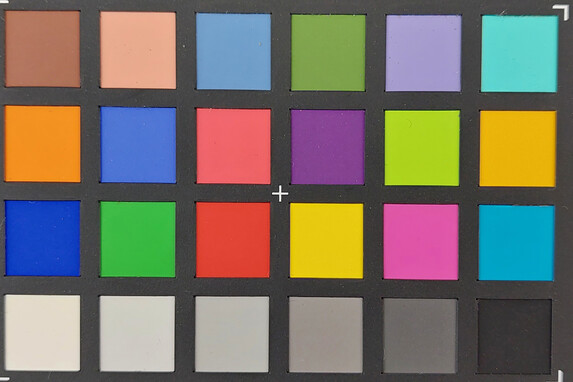
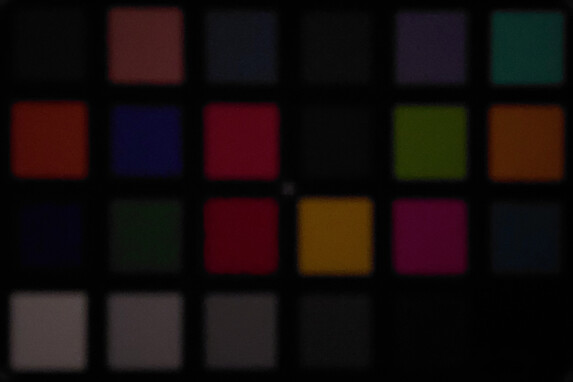
Accessories and warranty - 25-watt power supply included
Samsung bucks the trend of omitting the charger with the Galaxy A72. In addition to a USB-C cable, a SIM tool, and a quick guide, the packaging also contains a 25-watt power adapter that charges the smartphone quickly.
Samsung does not offer any special accessories at the time of testing. The Care+ insurance package can be purchased to extend the 24-month warranty for the Galaxy A72.
Input devices & operation - Responsive 90 Hz panel
The precise and responsive OLED panel with its 90 Hz refresh rate makes the Galaxy A72 very smooth to use. Gesture control is also available. A one-hand mode can also be activated. If you do not like the preloaded Samsung keyboard, which is split into two in landscape mode, you can always replace it with another one from the Google Play Store.
Biometric authentication is possible on the Galaxy A72 via the optical fingerprint sensor integrated in the display, which responds to inputs even when the screen is turned off. It unlocks Samsung's smartphone reliably, but sometimes takes a second too long to unlock it. The second biometric login method is the face scan, but it is not as secure as the fingerprint sensor.
Display - Partially more than 1200 cd/m² brightness
Compared to the Galaxy A71, not much has changed in the display at first glance. The Galaxy A72 also uses a 6.7-inch Super AMOLED screen with a resolution of 2400 x 1080 pixels, which corresponds to a pixel density of 394 PPI.
However, the new mid-range top model has improved in terms of brightness. It also supports HDR10+, can be set to 60 or 90 Hz and has an always-on function. While the Galaxy A71 had an average brightness of 646 cd/m², the Galaxy A72 achieves visibly more with 734 cd/m² and combines that with good picture parameters, including a very even illumination, just like its predecessor.
Samsung promises up to 800 cd/m² brightness for the OLED panel, which is even lower. We can even elicit a peak luminance of 1262 cd/m² from the display in the APL50 measurement (= evenly distributed bright and dark picture areas). Without the brightness sensor, a maximum of 355 cd/m² is possible. We measured 1.78 cd/m² in the lowest brightness setting.
The OLED panel flickers from a display brightness setting of 2% in a frequency range of 121.4 to 367.6 Hz, which is quite irregular. Above that (brightness > 2%), however, the amplitude curve is much flatter (352.1 to 367.6 Hz), so the flickering should not bother even sensitive users.
| |||||||||||||||||||||||||
Brightness Distribution: 97 %
Center on Battery: 730 cd/m²
Contrast: ∞:1 (Black: 0 cd/m²)
ΔE ColorChecker Calman: 3.2 | ∀{0.5-29.43 Ø4.78}
ΔE Greyscale Calman: 3.5 | ∀{0.09-98 Ø5}
98.7% sRGB (Calman 2D)
Gamma: 2.05
CCT: 6605 K
| Samsung Galaxy A72 Super AMOLED, 2400x1080, 6.7" | Samsung Galaxy A71 AMOLED, 2400x1080, 6.7" | Samsung Galaxy S20 FE 5G Super AMOLED, 2400x1080, 6.5" | LG Velvet P-OLED, 2460x1080, 6.8" | Oppo Find X3 Lite OLED, 2400x1080, 6.4" | Xiaomi Mi 11 LED DotDisplay, 3200x1440, 6.8" | |
|---|---|---|---|---|---|---|
| Screen | 6% | 21% | 6% | -6% | 34% | |
| Brightness middle (cd/m²) | 730 | 629 -14% | 714 -2% | 586 -20% | 569 -22% | 840 15% |
| Brightness (cd/m²) | 734 | 646 -12% | 721 -2% | 587 -20% | 572 -22% | 845 15% |
| Brightness Distribution (%) | 97 | 95 -2% | 95 -2% | 97 0% | 97 0% | 98 1% |
| Black Level * (cd/m²) | ||||||
| Colorchecker dE 2000 * | 3.2 | 2.7 16% | 1.8 44% | 2.8 12% | 3.2 -0% | 1.2 62% |
| Colorchecker dE 2000 max. * | 8.8 | 6 32% | 5.1 42% | 6.3 28% | 6 32% | 2.7 69% |
| Greyscale dE 2000 * | 3.5 | 3 14% | 2 43% | 2.3 34% | 4.3 -23% | 2 43% |
| Gamma | 2.05 107% | 2.1 105% | 2.16 102% | 2.01 109% | 2.23 99% | 2.26 97% |
| CCT | 6605 98% | 6340 103% | 6588 99% | 6827 95% | 6607 98% | 6492 100% |
* ... smaller is better
Screen Flickering / PWM (Pulse-Width Modulation)
| Screen flickering / PWM detected | 367.6 Hz | ≤ 2 % brightness setting | |
The display backlight flickers at 367.6 Hz (worst case, e.g., utilizing PWM) Flickering detected at a brightness setting of 2 % and below. There should be no flickering or PWM above this brightness setting. The frequency of 367.6 Hz is relatively high, so most users sensitive to PWM should not notice any flickering. However, there are reports that some users are still sensitive to PWM at 500 Hz and above, so be aware. In comparison: 53 % of all tested devices do not use PWM to dim the display. If PWM was detected, an average of 8108 (minimum: 5 - maximum: 343500) Hz was measured. | |||
The OLED panel provides the best color reproduction in the "Natural" picture mode, but it only uses the smaller sRGB color space. If you switch to the second picture mode "Vivid", it uses the larger DCI-P3 color space, but is hardly worse than the "Natural" picture mode in terms of picture parameters. However, this is only true if you adjust the settings, because the display is otherwise too cool in the standard setting. We have included screenshots with our settings for the "Natural" picture mode as a calibration guide.
Display Response Times
| ↔ Response Time Black to White | ||
|---|---|---|
| 3.2 ms ... rise ↗ and fall ↘ combined | ↗ 1.6 ms rise | |
| ↘ 1.6 ms fall | ||
| The screen shows very fast response rates in our tests and should be very well suited for fast-paced gaming. In comparison, all tested devices range from 0.1 (minimum) to 240 (maximum) ms. » 13 % of all devices are better. This means that the measured response time is better than the average of all tested devices (20.2 ms). | ||
| ↔ Response Time 50% Grey to 80% Grey | ||
| 6.4 ms ... rise ↗ and fall ↘ combined | ↗ 2.8 ms rise | |
| ↘ 3.6 ms fall | ||
| The screen shows very fast response rates in our tests and should be very well suited for fast-paced gaming. In comparison, all tested devices range from 0.165 (minimum) to 636 (maximum) ms. » 18 % of all devices are better. This means that the measured response time is better than the average of all tested devices (31.6 ms). | ||
Thanks to its bright screen, the Galaxy A72 displays content legibly even in bright ambient light and is not affected by direct sunlight. As is typical for OLEDs, the screen turns slightly bluish or greenish when viewed from the side, and the brightness also decreases slightly from time to time. However, this does not affect the readability.
Performance - Snapdragon 720G with handbrake
The mid-range SoC calculates in the Galaxy A72 Snapdragon 720G and is supported by 6 GB RAM and the graphics chip Adreno 618 graphics chip. This results in a quite high system speed and a mostly smooth operation, where small stutters only creep in very rarely.
Despite the SoC change, the new Samsung is not noticeably faster than its predecessor, the Galaxy A71. Accordingly, the competition is not very impressed, also because the Galaxy A72 often seems to apply the throttling brake internally. Therefore, the Samsung actually achieves a lower score in the synthetic benchmarks as well as in the browser performance.
| AnTuTu v8 - Total Score (sort by value) | |
| Samsung Galaxy A72 | |
| Samsung Galaxy A71 | |
| Samsung Galaxy S20 FE 5G | |
| LG Velvet | |
| Oppo Find X3 Lite | |
| Xiaomi Mi 11 | |
| Average Qualcomm Snapdragon 720G (253274 - 288306, n=5) | |
| AImark - Score v2.x (sort by value) | |
| Samsung Galaxy A72 | |
| Xiaomi Mi 11 | |
| Average Qualcomm Snapdragon 720G (21091 - 21348, n=2) | |
| Jetstream 2 - 2.0 Total Score | |
| Average of class Smartphone (23.8 - 387, n=153, last 2 years) | |
| Xiaomi Mi 11 (Chrome 88) | |
| LG Velvet (Chrome 83) | |
| Average Qualcomm Snapdragon 720G (37.8 - 54.4, n=4) | |
| Samsung Galaxy S20 FE 5G (Chrome 81.0.4044.138) | |
| Samsung Galaxy A72 (Chrome 90.0.4430.91) | |
| Samsung Galaxy A71 (Chrome 79.0.3945.136) | |
| JetStream 1.1 - Total Score | |
| Xiaomi Mi 11 (Chrome 88) | |
| Average Qualcomm Snapdragon 720G (59.7 - 94.7, n=5) | |
| Oppo Find X3 Lite (Chrome 88.0.4324.181) | |
| Samsung Galaxy S20 FE 5G (Chrome 81.0.4044.138) | |
| Samsung Galaxy A71 (Chrome 79.0.3945.136) | |
| Samsung Galaxy A72 (Chrome 90.0.4430.91) | |
| Speedometer 2.0 - Result 2.0 | |
| Average of class Smartphone (15.2 - 643, n=126, last 2 years) | |
| Xiaomi Mi 11 (Chrome 88) | |
| LG Velvet (Chrome 83) | |
| Samsung Galaxy S20 FE 5G (Chrome 81.0.4044.138) | |
| Average Qualcomm Snapdragon 720G (26.8 - 45.2, n=4) | |
| Samsung Galaxy A71 (Chrome 79.0.3945.136) | |
| Samsung Galaxy A72 (Chrome 90.0.4430.91) | |
| WebXPRT 3 - Overall | |
| Average of class Smartphone (38 - 380, n=34, last 2 years) | |
| Samsung Galaxy S20 FE 5G (Chrome 81.0.4044.138) | |
| Xiaomi Mi 11 (Chrome 88) | |
| Oppo Find X3 Lite (Chrome 88.0.4324.181) | |
| LG Velvet (Chrome 83) | |
| Average Qualcomm Snapdragon 720G (53 - 78, n=5) | |
| Samsung Galaxy A71 (Chrome 79.0.3945.136) | |
| Samsung Galaxy A72 (Chrome 90.0.4430.91) | |
| Octane V2 - Total Score | |
| Average of class Smartphone (2228 - 121337, n=201, last 2 years) | |
| Xiaomi Mi 11 (Chrome 88) | |
| LG Velvet (Chrome 83) | |
| Average Qualcomm Snapdragon 720G (11846 - 17734, n=5) | |
| Oppo Find X3 Lite (Chrome 88.0.4324.181) | |
| Samsung Galaxy S20 FE 5G (Chrome 81.0.4044.138) | |
| Samsung Galaxy A71 (Chrome 79.0.3945.136) | |
| Samsung Galaxy A72 (Chrome 90.0.4430.91) | |
| Mozilla Kraken 1.1 - Total | |
| Samsung Galaxy A72 (Chrome 90.0.4430.91) | |
| Samsung Galaxy A71 (Chrome 79.0.3945.136) | |
| Average Qualcomm Snapdragon 720G (2532 - 3577, n=5) | |
| Oppo Find X3 Lite (Chrome 88.0.4324.181) | |
| Samsung Galaxy S20 FE 5G (Chrome 81.0.4044.138) | |
| LG Velvet (Chrome 83) | |
| Xiaomi Mi 11 (Chrome 88) | |
| Average of class Smartphone (257 - 28190, n=156, last 2 years) | |
* ... smaller is better
| Samsung Galaxy A72 | Samsung Galaxy A71 | Samsung Galaxy S20 FE 5G | LG Velvet | Oppo Find X3 Lite | Xiaomi Mi 11 | Average 128 GB UFS 2.0 Flash | Average of class Smartphone | |
|---|---|---|---|---|---|---|---|---|
| AndroBench 3-5 | -9% | 138% | 48% | 70% | 176% | -3% | 326% | |
| Sequential Read 256KB (MB/s) | 490.8 | 493 0% | 1528 211% | 925 88% | 953 94% | 1615 229% | 530 ? 8% | 2226 ? 354% |
| Sequential Write 256KB (MB/s) | 260 | 192.4 -26% | 676 160% | 409.2 57% | 466.2 79% | 754 190% | 212 ? -18% | 1848 ? 611% |
| Random Read 4KB (MB/s) | 119.2 | 112.3 -6% | 228.4 92% | 154.3 29% | 194.7 63% | 278.5 134% | 130.6 ? 10% | 295 ? 147% |
| Random Write 4KB (MB/s) | 114.7 | 109.6 -4% | 218.4 90% | 135.9 18% | 166 45% | 289.3 152% | 101.2 ? -12% | 335 ? 192% |
Games - run with stereo sound and largely smoothly
The Snapdragon 720G and its Adreno 618 GPU are fast enough to play current games smoothly and also benefits from its dual speakers. However, the performance reserves are not too big, so you have to lower the graphics details sometimes to avoid stutters. You do not have this choice in PUBG Mobile because the HD setting can be selected at best. However, it runs with a constant 30 frames per second, just like Armajet. We determine the frame rates with Gamebench.
Emissions - Hardly any heat development even under load
Temperature
The Galaxy A72 heat generation is not a problem with a maximum of 34.7 °C (94.46 °F). However, the smartphone sometimes has to throttle its performance internally, as GFXBench's two test scenarios show. The performance drops significantly right after the first run.
| 3DMark - Wild Life Stress Test Stability | |
| Samsung Galaxy A72 | |
(+) The maximum temperature on the upper side is 34.2 °C / 94 F, compared to the average of 35.2 °C / 95 F, ranging from 21.9 to 247 °C for the class Smartphone.
(+) The bottom heats up to a maximum of 34.7 °C / 94 F, compared to the average of 34 °C / 93 F
(+) In idle usage, the average temperature for the upper side is 29.7 °C / 85 F, compared to the device average of 32.9 °C / 91 F.
Speaker
The dual speakers of the Galaxy can play quite loud with 88.9 dB(A) and distort only slightly even at maximum volume. Because bass tones are underrepresented, the sound mix sounds a bit thin, but that is not a concern in everyday use.
Speakers and headphones can be connected via Bluetooth 5.0 or wired via USB-C adapter or the 3.5 mm jack. The latter also serves as an analog receiver for the radio and scores with a very good signal-to-noise ratio (SNR) of 102.04 dBFS.
Samsung Galaxy A72 audio analysis
(+) | speakers can play relatively loud (88.9 dB)
Bass 100 - 315 Hz
(-) | nearly no bass - on average 25.1% lower than median
(±) | linearity of bass is average (8.9% delta to prev. frequency)
Mids 400 - 2000 Hz
(±) | reduced mids - on average 7.1% lower than median
(+) | mids are linear (4.3% delta to prev. frequency)
Highs 2 - 16 kHz
(±) | higher highs - on average 6% higher than median
(+) | highs are linear (3.4% delta to prev. frequency)
Overall 100 - 16.000 Hz
(±) | linearity of overall sound is average (19.6% difference to median)
Compared to same class
» 29% of all tested devices in this class were better, 8% similar, 63% worse
» The best had a delta of 11%, average was 35%, worst was 134%
Compared to all devices tested
» 48% of all tested devices were better, 7% similar, 44% worse
» The best had a delta of 4%, average was 24%, worst was 134%
Samsung Galaxy A71 audio analysis
(+) | speakers can play relatively loud (85.2 dB)
Bass 100 - 315 Hz
(-) | nearly no bass - on average 31.9% lower than median
(±) | linearity of bass is average (11.5% delta to prev. frequency)
Mids 400 - 2000 Hz
(+) | balanced mids - only 3% away from median
(+) | mids are linear (4.1% delta to prev. frequency)
Highs 2 - 16 kHz
(±) | higher highs - on average 5.3% higher than median
(+) | highs are linear (2.5% delta to prev. frequency)
Overall 100 - 16.000 Hz
(±) | linearity of overall sound is average (20.7% difference to median)
Compared to same class
» 36% of all tested devices in this class were better, 8% similar, 55% worse
» The best had a delta of 11%, average was 35%, worst was 134%
Compared to all devices tested
» 55% of all tested devices were better, 8% similar, 37% worse
» The best had a delta of 4%, average was 24%, worst was 134%
Battery life - Larger battery brings more endurance
Energy absorption
With a maximum power consumption of 4.87 watts, the Galaxy A72 is very energy-saving and more efficient than the Galaxy A71. In addition, there is a 5,000 mAh battery, 500 mAh more than the predecessor, which lets us hope for long runtimes.
Unlike the Galaxy A52 and the Galaxy A52 5G the Galaxy A72 comes with a 25-watt power supply instead of a 15-watt one. Thus, the smartphone is recharged pretty quickly. In the test, it took exactly 1:23 hours to bring the empty battery back to 100%. 50% is reached after 33 minutes and 85% after 58 minutes.
| Off / Standby | |
| Idle | |
| Load |
|
Key:
min: | |
| Samsung Galaxy A72 5000 mAh | Samsung Galaxy A71 4500 mAh | Samsung Galaxy S20 FE 5G 4500 mAh | LG Velvet 4300 mAh | Oppo Find X3 Lite 4300 mAh | Xiaomi Mi 11 4600 mAh | Average Qualcomm Snapdragon 720G | Average of class Smartphone | |
|---|---|---|---|---|---|---|---|---|
| Power Consumption | -8% | -6% | 5% | -10% | -69% | -19% | -47% | |
| Idle Minimum * (Watt) | 0.86 | 0.63 27% | 0.75 13% | 0.66 23% | 0.92 -7% | 1.57 -83% | 0.982 ? -14% | 0.848 ? 1% |
| Idle Average * (Watt) | 1.82 | 1.49 18% | 1.41 23% | 1.58 13% | 1.97 -8% | 1.92 -5% | 1.94 ? -7% | 1.434 ? 21% |
| Idle Maximum * (Watt) | 1.86 | 1.51 19% | 1.44 23% | 1.6 14% | 1.98 -6% | 1.94 -4% | 2.06 ? -11% | 1.618 ? 13% |
| Load Average * (Watt) | 2.95 | 4.62 -57% | 3.84 -30% | 3.3 -12% | 3.33 -13% | 6.32 -114% | 4.02 ? -36% | 7.01 ? -138% |
| Load Maximum * (Watt) | 4.87 | 7.11 -46% | 7.67 -57% | 5.46 -12% | 5.77 -18% | 11.65 -139% | 6.16 ? -26% | 11.3 ? -132% |
* ... smaller is better
Battery life
The Galaxy A72 can draw from its 5,000 mAh battery for a long time. The smartphone manages 14:37 hours of simulated web surfing and almost 19 hours of video playback. Both are very good times, which neither the Galaxy A71 nor the other comparison devices can match.
| Samsung Galaxy A72 5000 mAh | Samsung Galaxy A71 4500 mAh | Samsung Galaxy S20 FE 5G 4500 mAh | LG Velvet 4300 mAh | Oppo Find X3 Lite 4300 mAh | Xiaomi Mi 11 4600 mAh | |
|---|---|---|---|---|---|---|
| Battery runtime | -14% | -14% | -15% | -5% | -37% | |
| Reader / Idle (h) | 52.6 | 36.1 -31% | 33.5 -36% | 19.1 -64% | ||
| H.264 (h) | 18.9 | 19.4 3% | 20.5 8% | 16.2 -14% | ||
| WiFi v1.3 (h) | 14.6 | 13.6 -7% | 12.7 -13% | 12.4 -15% | 13.9 -5% | 8.8 -40% |
| Load (h) | 5 | 4 -20% | 4.3 -14% | 3.6 -28% |
Pros
Cons
Verdict - proven recipe for success developed further
Samsung has revised its mid-range flagship in the right places with the Galaxy A72 and should once again pull out all the popularity stops. For comparatively little money, you get a fresh design and a configuration that deserves to be called premium.
With its strong and further improved features, Samsung's Galaxy A72 has the best prerequisites to continue the success of its predecessor.
The Galaxy A72 collects plus points with its 6.7-inch Super AMOLED display with 90 Hz, immense brightness and HDR10+. The IP67 certification, which is rare in the mid-range, additionally enhances the smartphone. Other advantages are the versatile 4x camera and the very good runtimes, even though the 5,000 mAh battery makes the Galaxy A72 heavier than the predecessor.
The list of drawbacks is quite short: You have to do without 5G in the Galaxy A72. We would also have wished for true dual-SIM and a better telephoto camera. There are alternatives from the same manufacturer: The Samsung Galaxy A52 and the Galaxy A52 5G are cheaper, but share many features with the Galaxy A72.
Price and availability
Samsung lists an RRP of 449 Euros (~$549) for the Galaxy A72. Of course, the official price has long been undercut in online stores, for example on Amazon. There, the smartphone is already available for just under 400 Euros (~$489) at the time of testing.
Samsung Galaxy A72
- 08/31/2022 v7 (old)
Manuel Masiero




